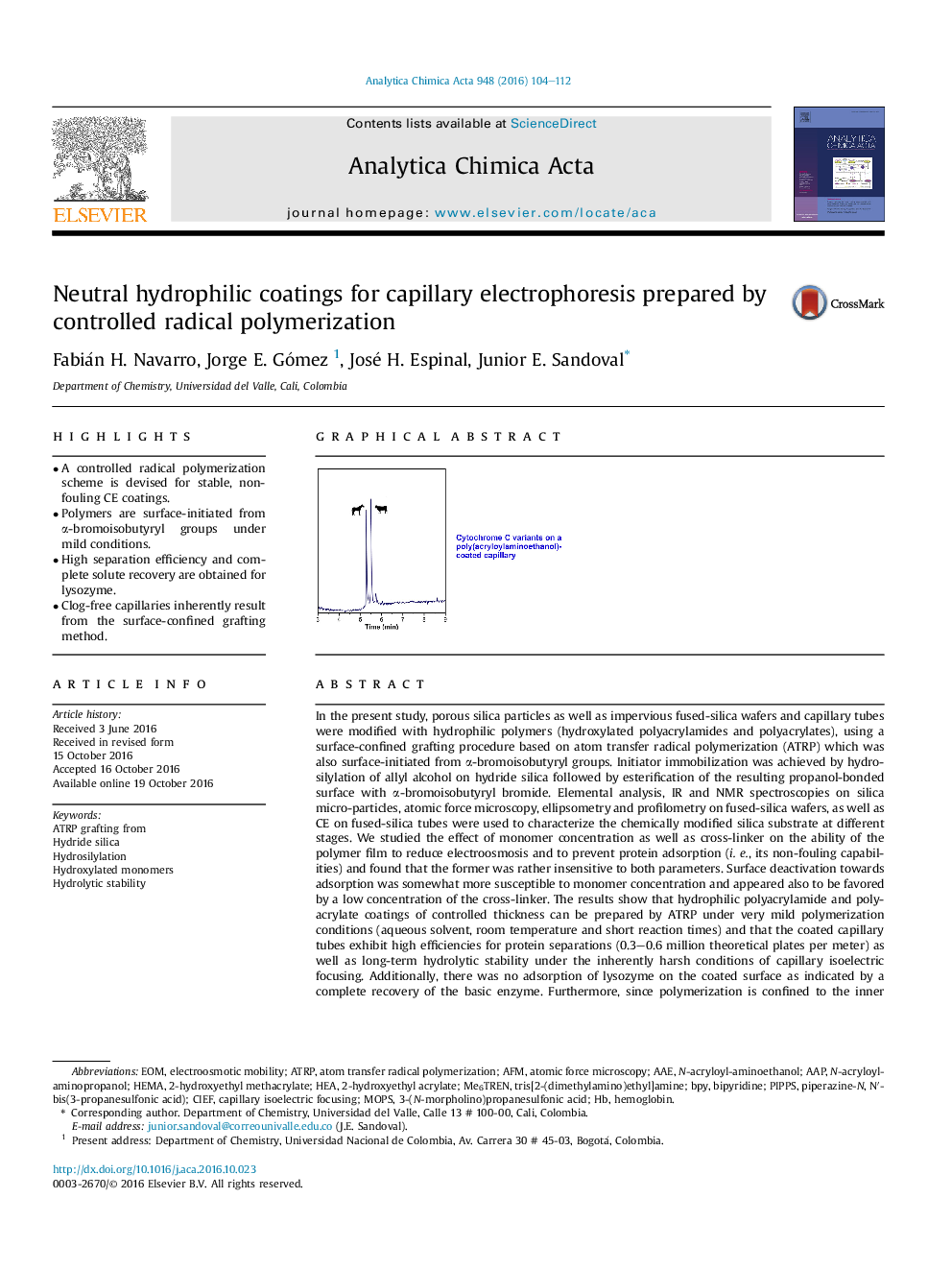| کد مقاله | کد نشریه | سال انتشار | مقاله انگلیسی | نسخه تمام متن |
|---|---|---|---|---|
| 5131291 | 1490884 | 2016 | 9 صفحه PDF | دانلود رایگان |
- A controlled radical polymerization scheme is devised for stable, non-fouling CE coatings.
- Polymers are surface-initiated from α-bromoisobutyryl groups under mild conditions.
- High separation efficiency and complete solute recovery are obtained for lysozyme.
- Clog-free capillaries inherently result from the surface-confined grafting method.
In the present study, porous silica particles as well as impervious fused-silica wafers and capillary tubes were modified with hydrophilic polymers (hydroxylated polyacrylamides and polyacrylates), using a surface-confined grafting procedure based on atom transfer radical polymerization (ATRP) which was also surface-initiated from α-bromoisobutyryl groups. Initiator immobilization was achieved by hydrosilylation of allyl alcohol on hydride silica followed by esterification of the resulting propanol-bonded surface with α-bromoisobutyryl bromide. Elemental analysis, IR and NMR spectroscopies on silica micro-particles, atomic force microscopy, ellipsometry and profilometry on fused-silica wafers, as well as CE on fused-silica tubes were used to characterize the chemically modified silica substrate at different stages. We studied the effect of monomer concentration as well as cross-linker on the ability of the polymer film to reduce electroosmosis and to prevent protein adsorption (i. e., its non-fouling capabilities) and found that the former was rather insensitive to both parameters. Surface deactivation towards adsorption was somewhat more susceptible to monomer concentration and appeared also to be favored by a low concentration of the cross-linker. The results show that hydrophilic polyacrylamide and polyacrylate coatings of controlled thickness can be prepared by ATRP under very mild polymerization conditions (aqueous solvent, room temperature and short reaction times) and that the coated capillary tubes exhibit high efficiencies for protein separations (0.3-0.6 million theoretical plates per meter) as well as long-term hydrolytic stability under the inherently harsh conditions of capillary isoelectric focusing. Additionally, there was no adsorption of lysozyme on the coated surface as indicated by a complete recovery of the basic enzyme. Furthermore, since polymerization is confined to the inner capillary surface, simple precautions (e.g., solution filtration) during the surface modification process are sufficient to prevent capillary clogging.
Journal: Analytica Chimica Acta - Volume 948, 15 December 2016, Pages 104-112
